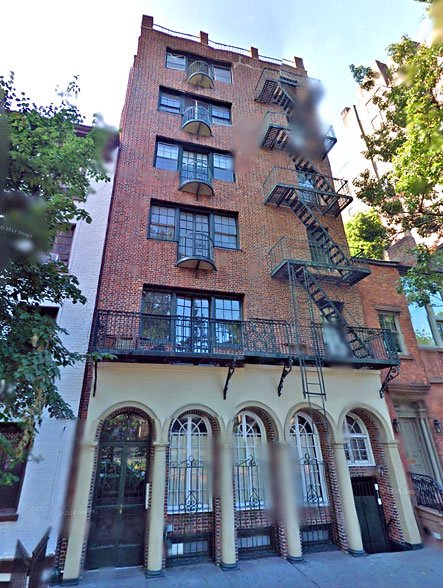Civil Rights History at 92 Grove Street

There are many sites throughout Greenwich Village, the East Village, and NoHo that have played an important role in Black history and the struggle for civil rights in the United States. One of those sites, located in the West Village across from Sheridan Square, did so twice, in two separate centuries, in two very different periods of the civil rights struggle, but illustrates the same race-based violence African Americans faced across the centuries.
In July 1863, angry white working-class New Yorkers began a protest against the new federal draft that allowed the wealthy to buy their way out of fighting in the Civil War. The protests quickly grew into five days of some of the bloodiest and most destructive rioting in American history, spreading throughout Manhattan. Hundreds of people were killed in these Draft Riots and many more were seriously injured; African Americans were the frequent target of the rioters’ often horrific actions, from shootings and stabbings to people being hung from lampposts.
The riots started in Midtown, where the Colored Orphan Asylum on Fifth Avenue near 42nd Street was targetted, but soon spread throughout the city, including Greenwich Village. The owner of the three-story home at 92 Grove Street took action, providing a safe harbor for Black citizens targeted by the rampaging mobs. The owners of the home provided refuge in their basement. The house was located just on the edge of what was then known as “Little Africa,” the largest African American community in New York that had been centered around today’s Minetta Street and Minetta Lane.

The Draft Riots were not the only spasm of violence directed against black New Yorkers or those who supported the rights of African Americans in the 19th century, but it was the worst. In the decades that preceded the Draft Riots, mobs attacked black churches and institutions, as well as white or mixed race ones which supported abolition, with shocking frequency.
The Greek Revival home at 92 Grove Street where this act of kindness during the Draft Riots took place stood there until 1916, when a larger apartment building replaced it. The newer six-story structure can best be recognized by its light yellow ground floor featuring arched windows and doorways.

In the 1960s, writer Alex Haley rented a studio in the back of present-day 92 Grove Street. Here in 1963, one hundred years after the Draft Riots, Haley conducted more than 50 interviews with Malcolm X. The sessions formed the basis for The Autobiography of Malcolm X, published in 1965 just after the civil rights activist’s assassination. The spiritual conversion narrative, which charts Malcolm X’s break with the Nation of Islam and ultimately adopting a more welcoming vision of race relations, was co-written by Haley and was his first book. Malcolm X was known for an approach to ending oppression of African Americans which eschewed the non-violent approach of Martin Luther King, Jr. Malcolm X instead called for action to protect and liberate Black people by “any means necessary“ in response to the widespread racist and often deadly violence African-Americans faced in the 1950s and 60s in response to efforts to attain their civil rights, or just to live their lives on a daily basis.

No. 92 Grove Street also features a historic plaque placed by Village Preservation in May 2019 to commemorate the author’s work and his time in Greenwich Village.


So interesting! Here I was raised in GV born in 1947 and never learned about the history of Minetta Lane, let alone the first Black Church on Sixth Ave.
Thank you for publishing.